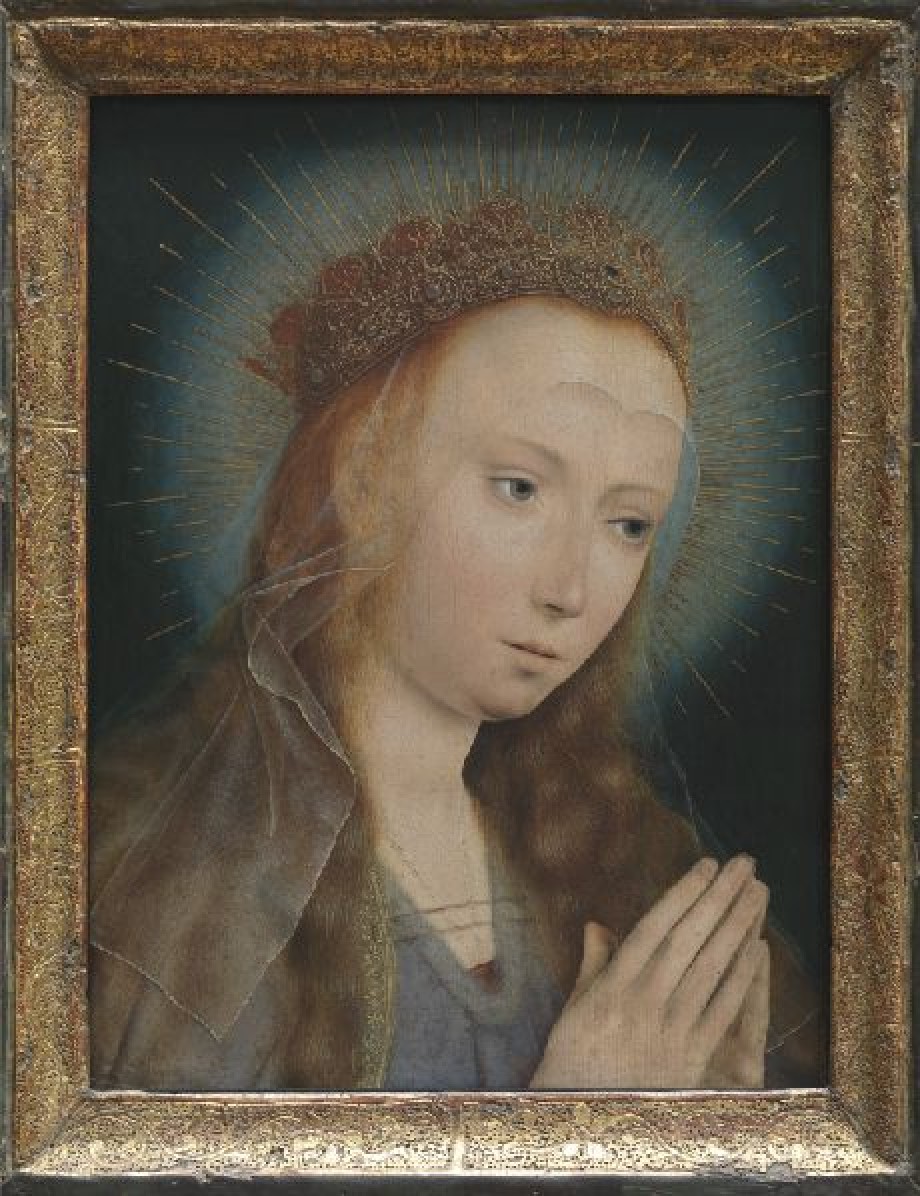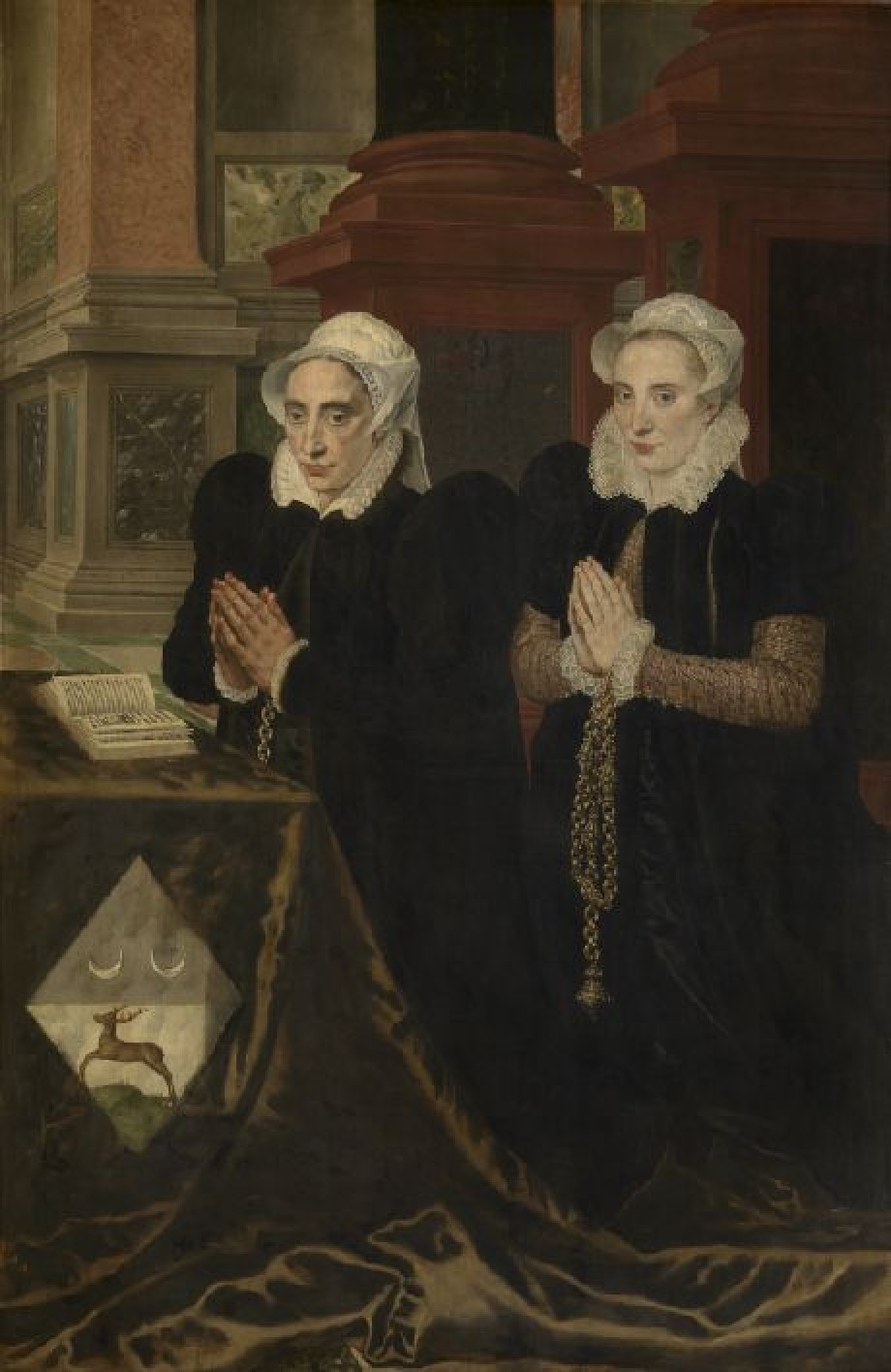The Adoration of the Magi

Artist / maker
Meester van de Aanbidding te Antwerpen (painter)Date
(1519)Period
16th centuryCollection
Royal Museum of Fine Arts Antwerp
Flocking tot he new arrival The word ‘triptych’ usually makes us think of large paintings, but this is a small example. It undoubtedly hung in the private home of its wealthy, unidentified owner, who is shown here on the right kneeling in prayer and dressed in a fur-lined gown. He is accompanied by St Margaret. The landscape in the background…
Read more
Flocking tot he new arrival
The word ‘triptych’ usually makes us think of large paintings, but this is a small example. It undoubtedly hung in the private home of its wealthy, unidentified owner, who is shown here on the right kneeling in prayer and dressed in a fur-lined gown. He is accompanied by St Margaret. The landscape in the background continues across the other panels. On the left, we see St George slaying the dragon.
The principal scene at the centre is one that was often depicted by painters in the early sixteenth century. Three ‘kings’ arrive with their retinues of horsemen and soldiers to visit the new-born Jesus and his parents, and to bring them gifts. There is a ruin overgrown with trees in the background and Bethlehem looks very much like a contemporary village in Brabant. If you find the scene rather overcrowded, eccentric and theatrical, you would be in good company: this is a ‘Mannerist’ work – a style of painting that was fashionable at the time, in prosperous Antwerp too. Mannerists painted a plethora of detail and liked to use bright colours.
Painters’ studios specialised in particular themes, enabling them to work in series, quickly and efficiently, with the customer’s portrait only inserted at the end. The Adoration of the Magi was one such theme, and it caught on internationally. It gave painters the opportunity to show off their skills at depicting exotic fabrics and objects. We do not know who or which studio painted this triptych, but its maker was given the provisional name ‘Master of the Antwerp Adoration’ based on this particular work.
Read less











